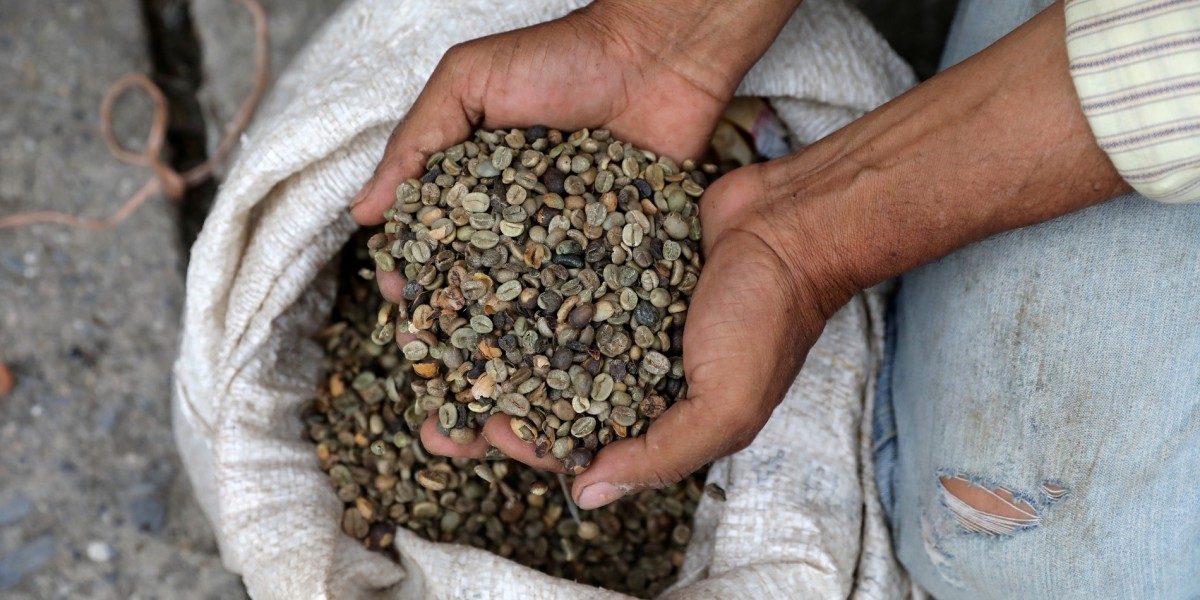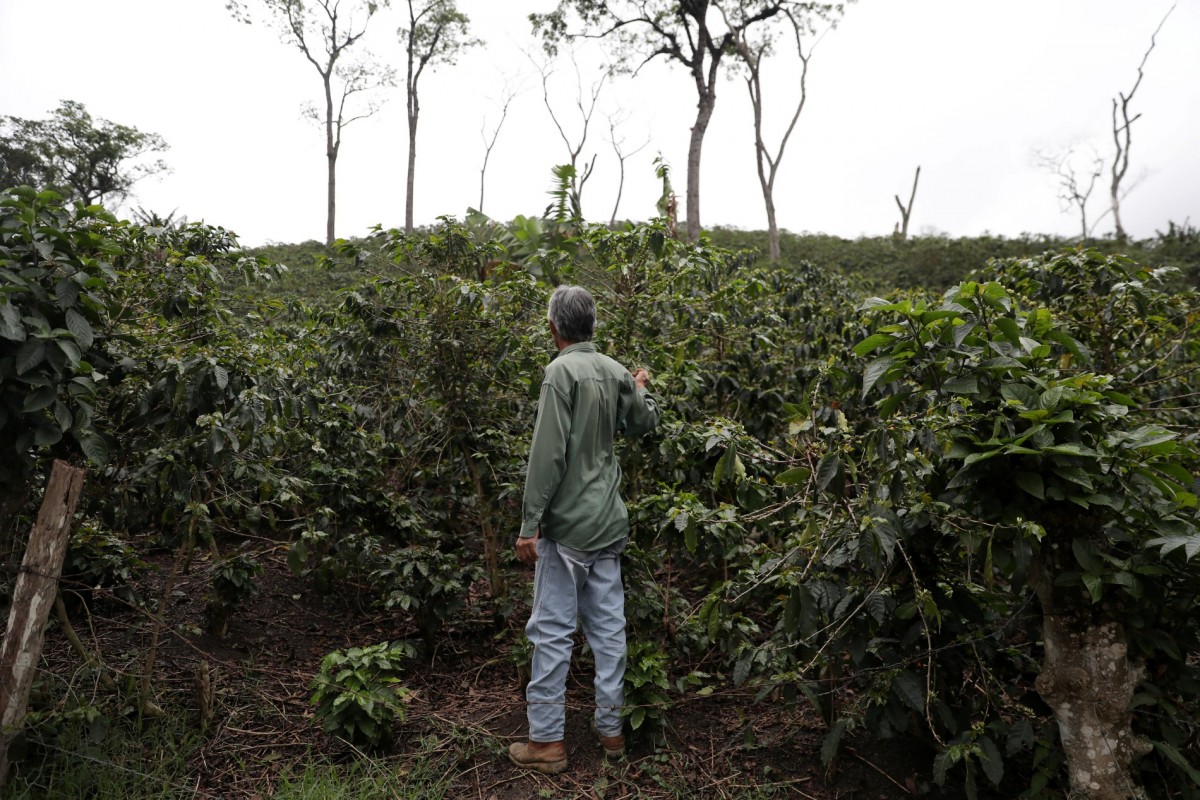Growing coffee will starve to death? The crisis of imbalance between production and marketing between the Tropic of Cancer and the Tropic of Cancer
Professional coffee knowledge exchange More coffee bean information Please pay attention to coffee workshop (Weixin Official Accounts cafe_style)
In addition to tobacco and alcohol, it is probably difficult for human history to produce a "legal addiction" agricultural product like coffee. Legend has it that the first coffee shop was born in Damascus in 1530 AD, and since then human demand for coffee has continued to grow, and there is no trend of exhaustion, which is an alternative economic miracle. But this lucrative "black gold" market fell on the farmers at the source, and the conclusion was that "growing coffee will starve to death."

The soil between Tropic of Cancer and Tropic of Cancer is the most suitable environment for growing coffee beans. According to Euromonitor, the global coffee industry has doubled in value to $90 billion over the past decade. Consumers around the world are drinking more, but farmers from Peru to Papua New Guinea to Ethiopia to Ecuador are suffering: Arabica, which accounts for more than 60 percent of the coffee market, has fallen to a 14-year low of just $0.90 a pound.
There are two types of coffee beans: Robusta, a hardy, low-quality bean, mostly made into instant coffee; Arabica, a mild, high-quality bean, which is divided into high-altitude beans and low-altitude beans. According to the Financial Times, the price collapse was caused by a surge in Arabica's low-grade bean production, which dragged down the market. For three years, production, processing, and shipping costs were about $1.50 per pound, but the accepted transaction price was only $1.20.

Coffee beans trade for less than the cost of planting, causing many coffee farmers to abandon their fields.
Brazil dominates the coffee market and is the world's largest coffee producer and exporter, accounting for 28% of global coffee bean trade. Local coffee farmers mechanize large-scale farming, specializing in low-quality beans, and can cost less than $0.90 per pound. Last year, Brazil produced a record 62 million bags, converted into 60 kg bags, and a weak currency, providing local players with an export advantage and a market winner. This year's output is likely to continue to record highs.
However, even Brazil's low-cost coffee farmers may lose money on the trend. There are about 8,000 smallholder farmers among the members of large local coffee cooperatives. If trading prices fall again, unemployment is imminent, officials said.
In addition to low-priced beans mass production caused bad money to drive out good money, speculation in the financial market is also one of the culprits causing coffee prices to collapse. The New York Coffee Exchange, for example, has been selling short since 2017, from buyers and sellers of futures to hedge funds, manipulating prices. Brazil's biggest exporter points out that this will create a vicious circle. Coffee farmers cannot afford fertilizer, which leads to a deterioration in quality.
"More and more farmland is turning to wasteland," says Sonia Vásquez, an organic coffee farmer in Honduras."Many people are leaving. Growing coffee will starve." Her harvest has plummeted by nearly a third over the past year, and her income has fallen short of her expenses.
Although prices collapsed far more than the economic crisis in Latin America, farmers abandoned their fields sadly, but consumers did not know anything, and even felt that coffee prices were rising. The reason is that coffee beans cost only 4%, and labor and taxes are the big expenses.
To address the coffee crisis, several multinational companies are providing technology and saplings to farmers and cooperatives to ensure safe supply; Starbucks, the leading coffee chain, is investing $20 million in smallholder farmers in El Salvador, Guatemala, Mexico and Nicaragua; and Nestle, the world's largest buyer, is investing 68 million Swiss francs a year in technology development.
But more and more small farmers cannot live off coffee fields and are looking for buyers. Once they stop growing coffee, the world's billion coffee-drinkers will face an unprecedented coffee shortage.
END
Important Notice :
前街咖啡 FrontStreet Coffee has moved to new addredd:
FrontStreet Coffee Address: 315,Donghua East Road,GuangZhou
Tel:020 38364473
- Prev

[man-machine war] two faces in coffee brewing: "things in the cup" and "sense of ritual"
Professional coffee knowledge exchange more coffee bean information Please follow the coffee workshop (official Wechat account cafe_style) in recent years, the importance of machine brewing in China's coffee market has begun to show signs, but on the whole it is only a trifle. In fact, in coffee shops in Europe, America, Australia and other places where coffee culture is booming, machines have long been widely used to brew coffee.
- Next

Luckin Coffee became the designated coffee partner of the 2019 China Supercar Championship.
Professional coffee knowledge exchange more coffee bean information please follow the coffee workshop (Wechat official account cafe_style) June 29-30, 2019 China Super Sports car Championship (referred to as China GT) Shanghai station passionate start, designated coffee partner Luckin Coffee flash store simultaneously unveiled, to provide the audience with high-quality coffee drinks and healthy light food services. Chinese supercar brocade
Related
- Being chased out of the rain in front of Starbucks?! Store: Sheltering from rain under umbrellas poses a safety hazard
- The white moonlight has changed?! Lucky launches "Big Winter Pear American"
- Hand-brewed coffee three-stage method, high-sweet and universal brewing method to share! What does the high sweet water level of hand-brewed coffee mean?
- What is the difference between raw, refined and full espresso coffee? How to extract espresso and taste good?
- A complete list of coffee bean names and their meanings! What is Yejia Shefi coffee? Where is Mantelin coffee?
- What grade does Arida Manor Kaduai coffee beans belong to? What treatment is Arida ASD slow anaerobic sun exposure?
- The milk tea cup becomes smaller?! Overlord Tea Girl launches a new "Return to Yunnan" series
- Accused of selling counterfeit and high-priced coffee beans! Well-known boutique coffee brand "Oukelao" bowed and apologized!
- How to make espresso dumplings? Can I eat coffee and glutinous rice balls together?
- Save the unformed and stagnant powder cakes in one second! What is the problem with stagnant water in the powder bowl of the espresso machine?

